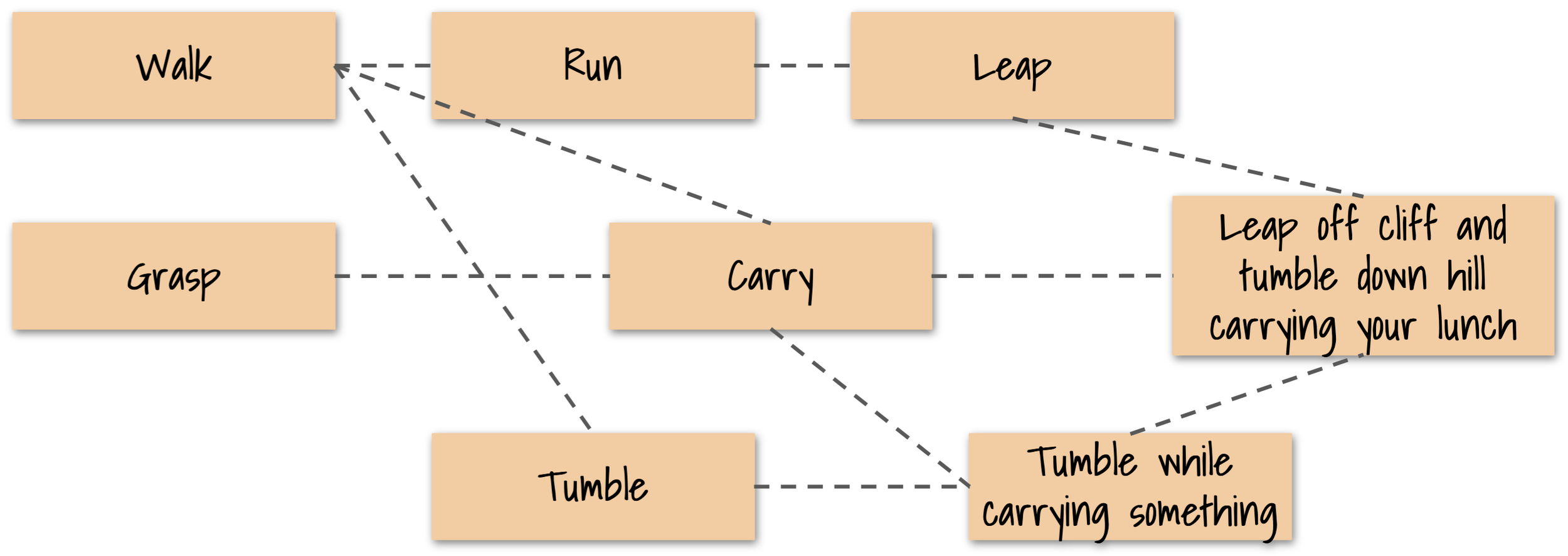Structuring an Initiative Step By Step
These steps guide you through setting up teams. View this as an experiment, in which you are always observing, measuring, and adjusting.
View each step as an experiment.
We would like to emphasize that these activities are not “cookbook” activities: they each entail a great deal of judgment, which benefits greatly from experience. There is no magical process to get around the fact that these judgments are necessary. That is why we advise starting small, observing and adjusting, and learning. Over time your judgment will improve and you will gradually improve your initiative’s organization. If you are inexperienced at setting up initiatives, we highly recommend obtaining assistance from people who are experienced and who embrace Agile 2 ideas.
These activities are not “cookbook” activities. They require judgment.
Also, these steps cannot always be done in sequence. Real things are messy: issues are often inter-twined. It is often necessary to define a starting point for one step and go on to others, and then come back to a prior step and adjust.
Define the Key Capabilities
Your product’s capabilities are the things that the product does: they generate the outcomes that you expect. (If your initiative is not about a product, then interpret “product” as the thing that you are creating that will deliver value to users or other stakeholders.)
Define the key capabilities that are to be developed initially, to attain a minimum viable product to test with users. Remember that this should remain fluid. There is guidance about that in the article Defining Capabilities, and also in Defining a Lean Experiment.
Deciding on the key capabilities cannot usually be done merely by considering business value, because it often depends on the complexity and cost of the various capabilities, and what you are ready and able to create, as well as what will be well received by users. Therefore, the choice of key capabilities needs to be holistic, and based on what you view as the optimal path for growth and eventual success.
The issue will come up of how and where to store the definitions of the capabilities. We recommend using a universally accessible tool that everyone in the organization can access. We also recommend not trying to “roll up” capabilities or turn this into a bookkeeping exercise. The point is to define the things to focus on and keep top-of-mind. They are your “short list”. They are not accounting items.
Define the Value Streams
Define the value streams that are needed to create the initial capabilities. A value stream is a sequence of activities that produce a capability or result that has value.
A value stream can be focused on developing an offering for customers, or it can be the operational offering itself that is delivering value to customers. For example, the people who design a car belong to the car’s development value stream, and the people who build the car belong to the operational value stream that is delivering cars to the customers.
Be cognizant of internal product value streams that converge on multiple customer-facing products. See What Is a Value Stream? for more information about value streams.
Identify External Partners
Identify external partners that will contribute to the value streams. These are either suppliers or entities that are co-developing a capability with you. See the article “Interaction With Suppliers“.
Define OKRs
Identify outcome-oriented metrics (OKRs) that indicate the effectiveness of each of the capabilities. See the articles Defining Dashboards and Defining a Lean Experiment.
Define Team Structures
Decide on Team Structures, including teams of teams, and horizontal structures. See the main article in Organization Design.
Identify Leadership Types Needed
Identify the kinds of leadership each team or structure will need.
Identify the Leaders
Identify people who are good candidates for those leadership kinds. Do not define fixed roles to fill: remember that people define their own role. Instead, think if terms of who can provide the types of leadership that you need. Some people can provide a mixture. See the article Engineering the Leadership.
Decide How to Observe
Decide on an approach for observing the leadership style that is being used by each individual. See the article Observing.
Define Shared Accountability
Identify the shared accountability that is needed for each capability, spanning the teams and organizational structures. Identify also final decision-makers for each important capability. See the article Accountability.


